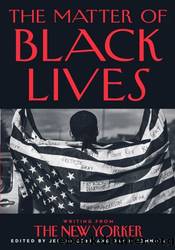The Matter of Black Lives by Jelani Cobb

Author:Jelani Cobb [Cobb, Jelani]
Language: eng
Format: epub
Published: 2021-07-21T00:00:00+00:00
Ghosts in the House
Hilton Als
October 27, 2003
No. 2245 Elyria Avenue in Lorain, Ohio, is a two-story frame house surrounded by look-alikes. Its small front porch is littered with the discards of former tenants: a banged-up bicycle wheel, a plastic patio chair, a garden hose. Most of its windows are boarded up. Behind the house, which is painted lettuce green, thereâs a patch of weedy earth and a heap of rusting car parts. Seventy-two years ago, the novelist Toni Morrison was born here, in this small industrial town twenty-five miles west of Cleveland, which most citydwellers would consider âout there.â The air is redolent of nearby Lake Erie and new-mown grass.
From Morrisonâs birthplace itâs a couple of miles to Broadway, where thereâs a pizzeria, a bar with sagging seats, and a brown building that sells dingy and dilapidated secondhand furniture. This is the building Morrison imagined when she described the house of the doomed Breedlove family in her first novel, âThe Bluest Eyeâ: âThere is an abandoned store on the southeast corner of Broadway and Thirty-fifth Street in Lorain, Ohio,â she wrote. âIt does not recede into its background of leaden sky, nor harmonize with the gray frame houses and black telephone poles around it. Rather, it foists itself on the eye of the passerby in a manner that is both irritating and melancholy. Visitors who drive to this tiny town wonder why it has not been torn down, while pedestrians, who are residents of the neighborhood, simply look away when they pass it.â
Love and disaster and all the other forms of human incident accumulate in Morrisonâs fictional houses. In the boarding house where the heroine of Morrisonâs second novel, âSula,â lives, âthere were rooms that had three doors, others that opened on the porch only and were inaccessible from any other part of the house; others that you could get to only by going through somebodyâs bedroom.â This is the gothic, dreamlike structure in whose front yard Sulaâs mother burns to death, âgesturing and bobbing like a sprung jack-in-the-box,â while Sula stands by watching, ânot because she was paralyzed, but because she was interested.â
Morrisonâs houses donât just shelter human dramas; they have dramas of their own. â124 was spiteful,â she writes in the opening lines of âBelovedâ (1987). âFull of a babyâs venom. The women in the house knew it and so did the children. For years each put up with the spite in his own way.â Living and dead ghosts ramble through No. 124, chained to a history that claims its inhabitants. At the center of Morrisonâs new novel, âLove,â is a deserted seaside hotelâa resort where, in happier times, blacks danced and socialized and swam without any white people complaining that they would contaminate the waterâbuilt by Bill Cosey, a legendary black entrepreneur, and haunted by his memory.
MORRISON SPENDS ABOUT HALF HER TIME IN A CONVERTED BOATHOUSE that overlooks the Hudson in Rockland County. The boathouse is a long, narrow, blue structure with white trim and large windows. A decade ago, when Morrison was in Princeton, where she teaches, it burned to the ground.
Download
This site does not store any files on its server. We only index and link to content provided by other sites. Please contact the content providers to delete copyright contents if any and email us, we'll remove relevant links or contents immediately.
| Archaeology | Essays |
| Historical Geography | Historical Maps |
| Historiography | Reference |
| Study & Teaching |
Underground: A Human History of the Worlds Beneath Our Feet by Will Hunt(11266)
Navigation and Map Reading by K Andrew(4558)
Sapiens by Yuval Noah Harari(4553)
Barron's AP Biology by Goldberg M.S. Deborah T(3636)
The Sympathizer by Viet Thanh Nguyen(3517)
5 Steps to a 5 AP U.S. History, 2010-2011 Edition (5 Steps to a 5 on the Advanced Placement Examinations Series) by Armstrong Stephen(3407)
Three Women by Lisa Taddeo(2925)
The Comedians: Drunks, Thieves, Scoundrels, and the History of American Comedy by Nesteroff Kliph(2792)
Water by Ian Miller(2596)
Drugs Unlimited by Mike Power(2195)
DarkMarket by Misha Glenny(1849)
The House of Government by Slezkine Yuri(1848)
The Library Book by Susan Orlean(1738)
A Short History of Drunkenness by Forsyth Mark(1732)
Revived (Cat Patrick) by Cat Patrick(1681)
The Woman Who Smashed Codes by Jason Fagone(1651)
The House of Rothschild: Money's Prophets, 1798-1848 by Niall Ferguson(1620)
And the Band Played On by Randy Shilts(1620)
Birth by Tina Cassidy(1573)
